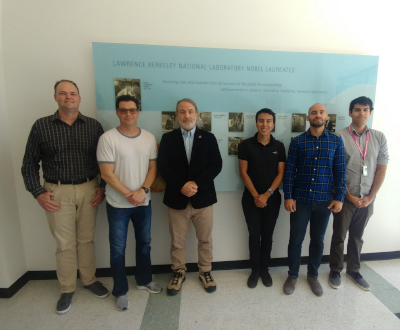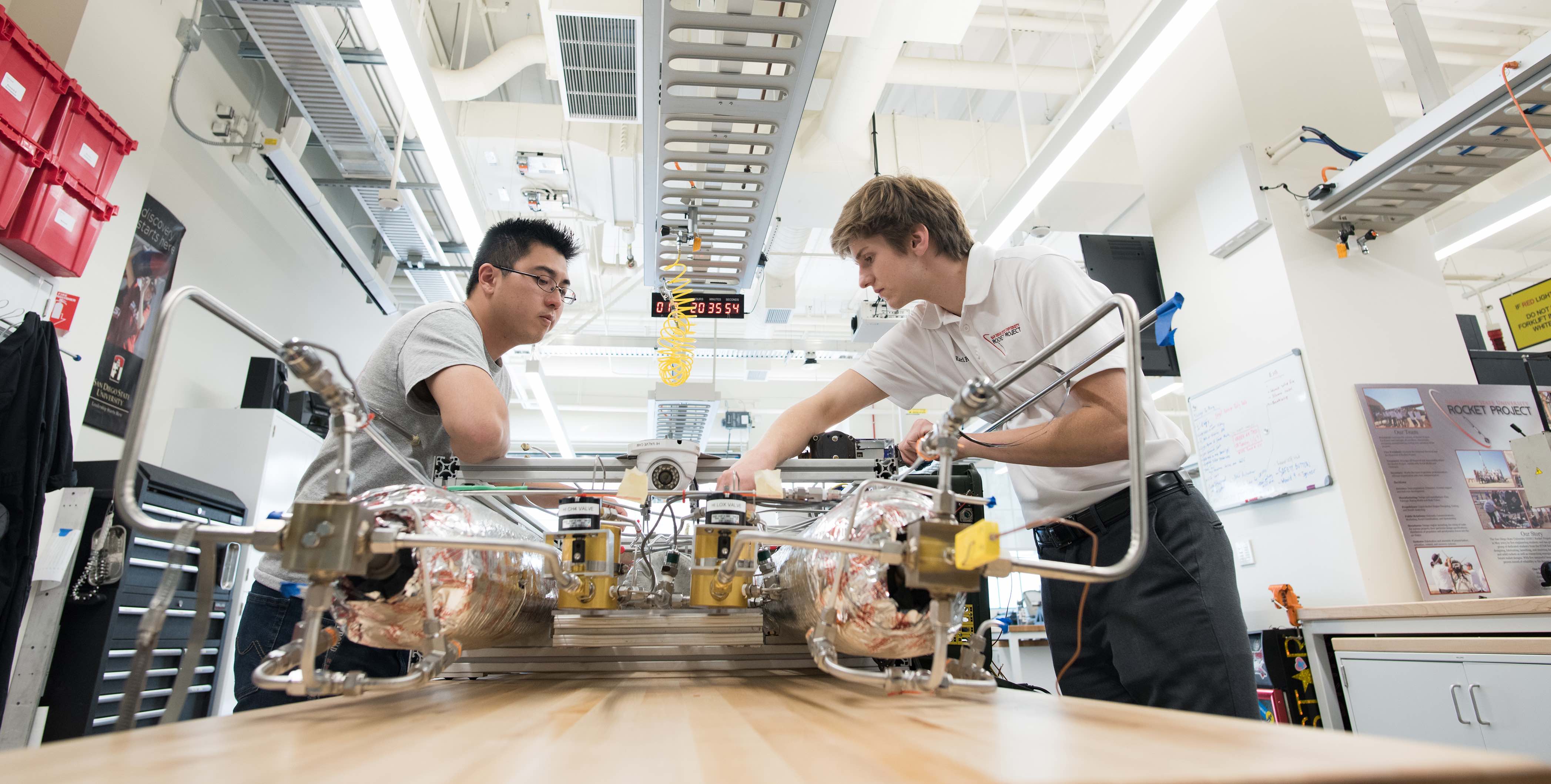Dr. Christopher Paolini Awarded Summer Research Fellowship at Lawrence Berkeley National Laboratory

L to R: Jonathan Matthews (Computational Science PhD candidate); Dr. David Trebotich, Applied Numerical Algorithms Group Staff Scientist,
LBNL Computational Research Division; Dr. Christopher Paolini; Giovanni Garcia (Computer Engineering Undergraduate),
Angel Boada (Computational Science PhD candidate); Richard Gonzales (Computer Engineering Undergraduate)
Dr. Christopher Paolini, Assistant Professor of Electrical and Computer Engineering, was awarded a 10-week summer research fellowship (June 3 - August 12, 2019) for himself and four SDSU students at Lawrence Berkeley National Laboratory (LBNL), a Department of Energy (DOE) Office of Science lab managed by the University of California, Berkeley.
Dr. Paolini is supervising his four students and working in the Applied Numerical Algorithms Group with LBNL Staff Scientist, Dr. David Trebotich, to jointly develop a massively parallel code to numerically simulate enhanced oil recovery processes and determine the effect of induced carbonate mineral precipitation on volumetric sweep efficiency through the introduction of excess alkalinity. The performance of an enhanced oil recovery process is determined by the volumetric sweep efficiency, or the volume of oil-bearing rock that encounters the injectant. Due to rock heterogeneity, loss of water and injectant pressure from regions of high permeability can degrade performance. One mechanism to increase sweep efficiency is to decrease permeability in selected rock layers to maintain uniform injectant pressure within an oil-bearing zone.
Dr. Paolini is working with his four students on individual summer research projects: SDSU undergraduate Computer Engineering student, Richard Gonzales, is using the LBNL Chombo framework for solving solute mass and energy transport phenomena. Chombo provides a set of tools for implementing finite difference and finite volume methods for the solution of partial differential equations on block-structured adaptively refined rectangular grids. SDSU undergraduate Computer Engineering student, Giovanni Garcia, is using the LBNL CrunchFlow multicomponent reactive flow and transport framework for modeling calcite and dolomite dissolution and precipitation induced from subsurface CO2 injection. SDSU Computational Science PhD candidate, Angel Boada, is working on implementing high-order differential operators in the PETSc (Portable, Extensible Toolkit for Scientific Computation) software suite used by Chombo and will be using these operators to model subsurface heat-diffusion with an anisotropic thermal conductivity tensor. SDSU Computational Science candidate, Jonathan Matthews, is working on a porescale model to simulate microfractures in shale and sandstone using Chombo’s embedded boundary method. Numerical simulations are being executed on the NERSC Cori supercomputer, a Cray XC40 with 622,336 total cores. Cori is the 8th most powerful supercomputer in the world on the November 2017 list of Top 500 supercomputers.

